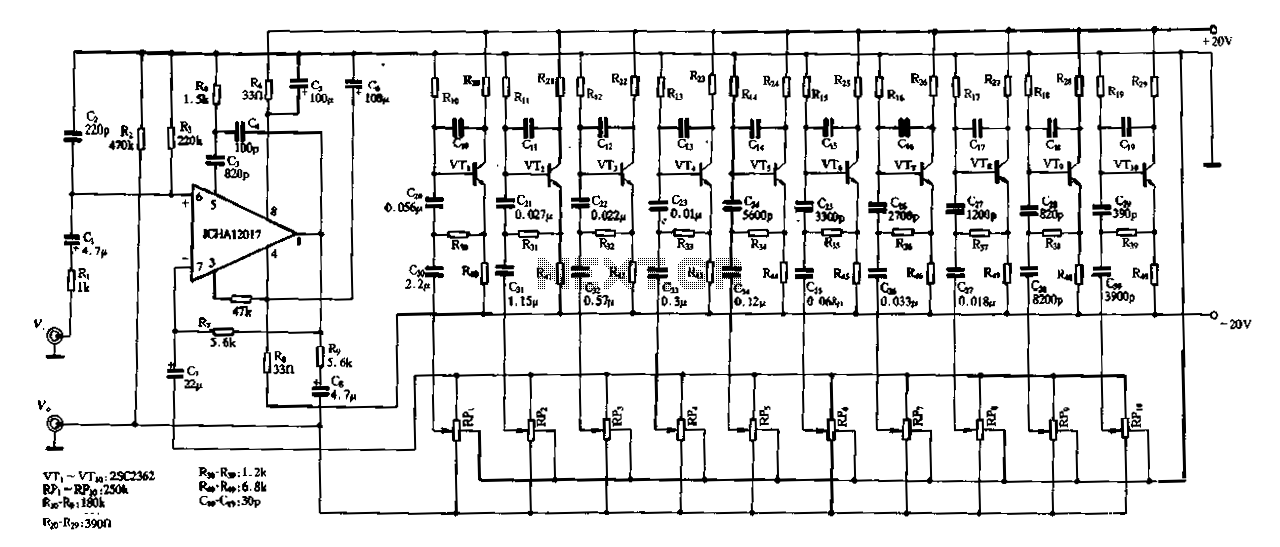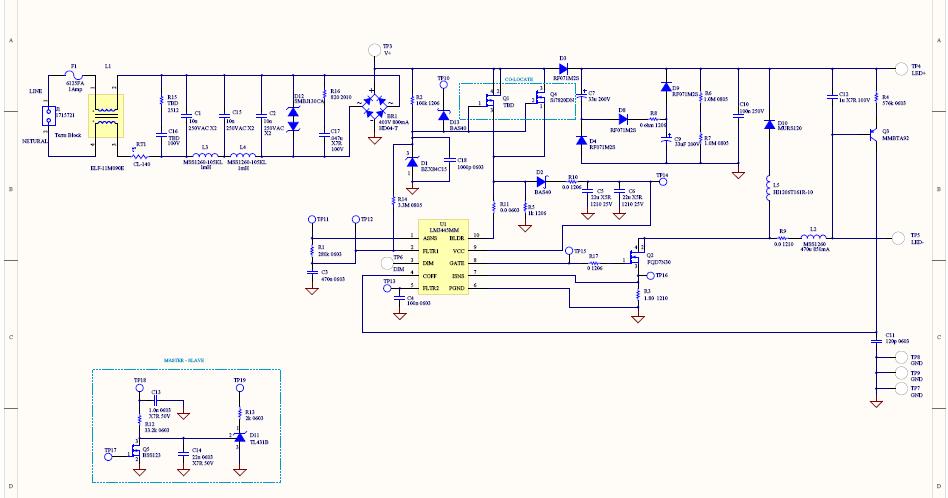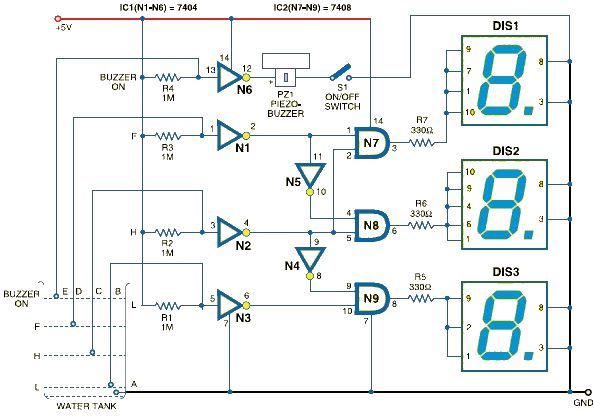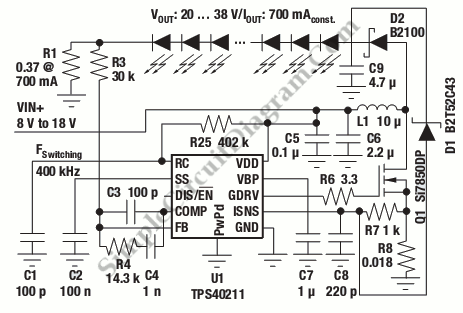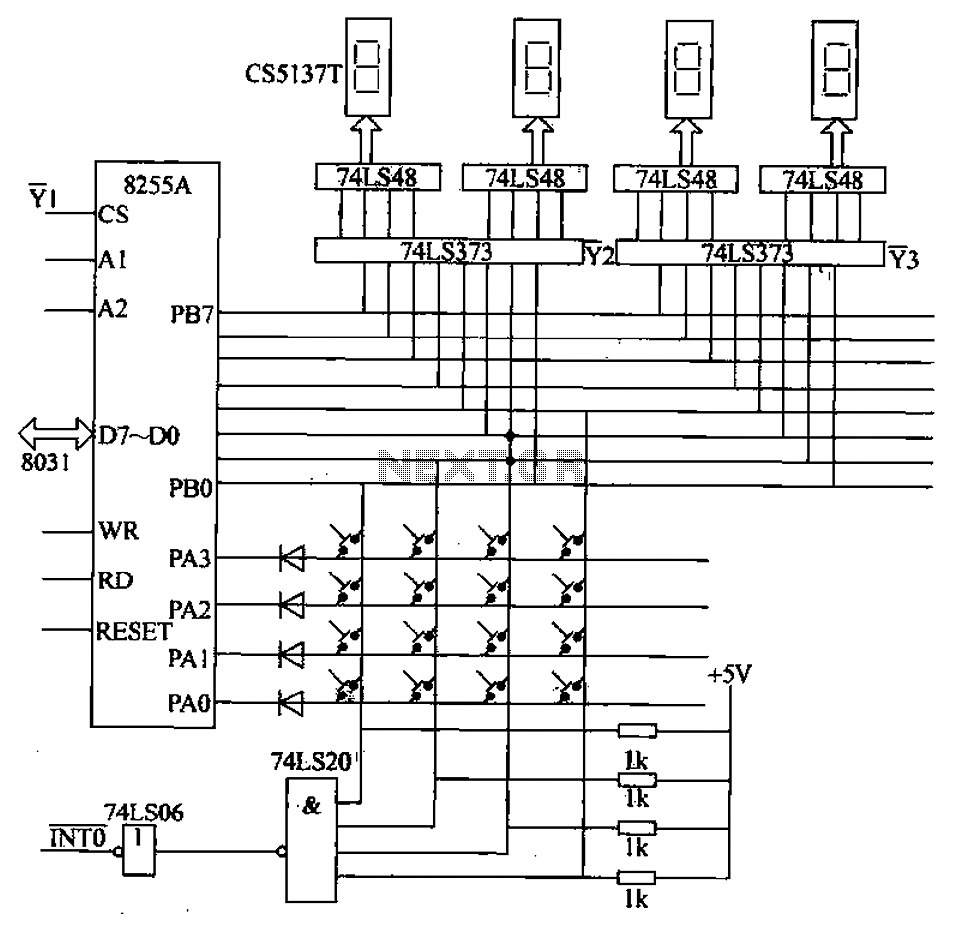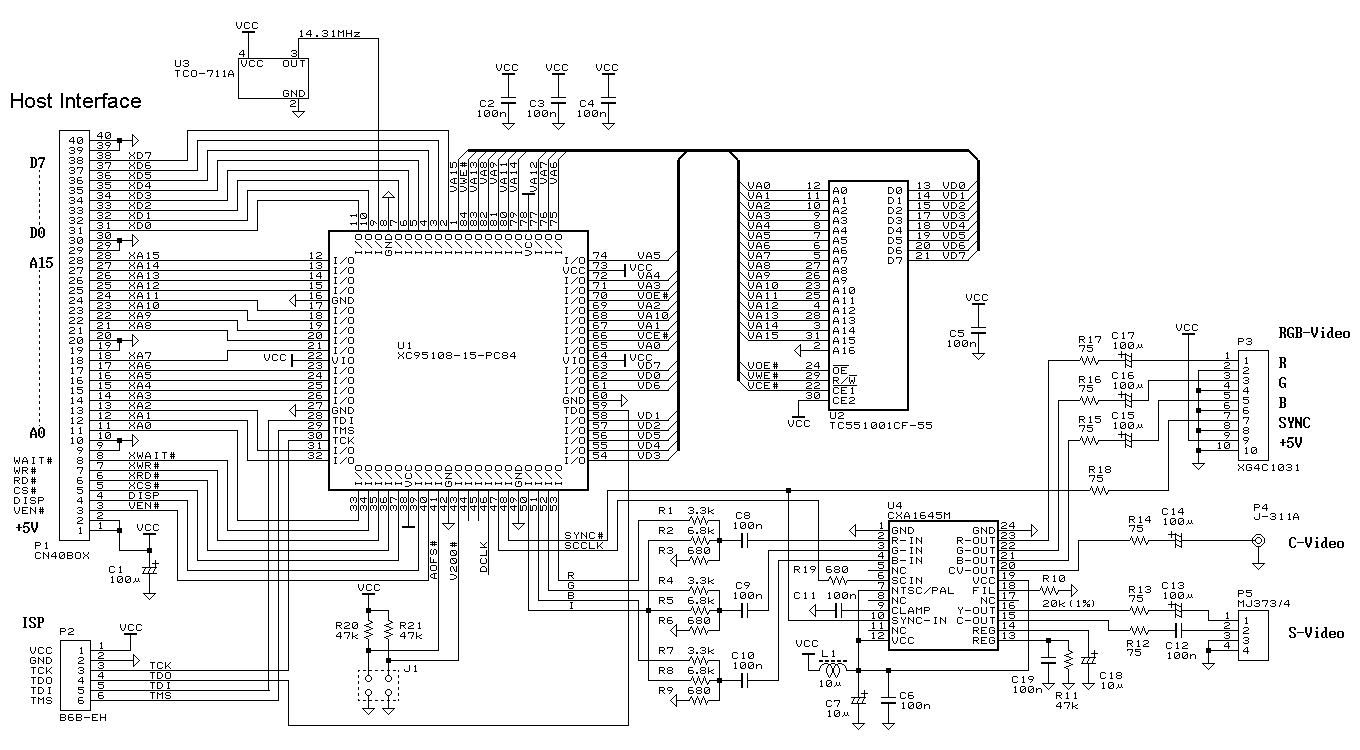
7 segment display driver
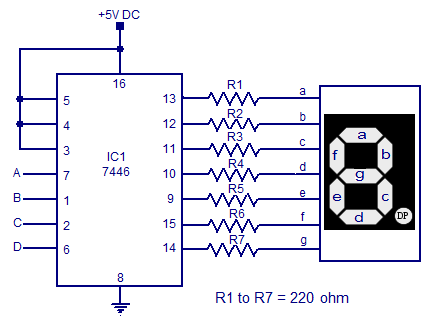
7-segment display driver circuit based on the 7446. This circuit includes a seven-segment display system and a 7-segment decoder/driver, capable of sinking and sourcing current for the display.
The 7446 is a BCD (Binary-Coded Decimal) to 7-segment latch/decoder/driver that facilitates the control of a 7-segment display. This integrated circuit can take a 4-bit binary input and convert it into a format suitable for driving a 7-segment display, illuminating the appropriate segments to represent decimal digits from 0 to 9.
In a typical application, the 7446 is connected to a 7-segment display through its output pins, which correspond to each segment of the display (labeled a through g). The circuit will also include current-limiting resistors in series with the display segments to prevent excessive current flow, which could damage the LED segments. The 7446 can source or sink current, allowing for flexibility in design. In a common-cathode configuration, the 7446 sources current to the segments when activated, while in a common-anode configuration, it sinks current.
The circuit can also incorporate additional components such as a microcontroller or a switch matrix to provide the binary inputs. The microcontroller can be programmed to output the appropriate binary values corresponding to the desired numeral on the display. Furthermore, the 7446 features enable and blanking inputs, allowing for control over the display's visibility and operation.
To enhance functionality, additional features such as multiplexing can be integrated, allowing for the display of multiple digits using fewer pins by rapidly switching between them. This method takes advantage of the persistence of vision effect, making it possible to present the appearance of multiple digits on a single display unit.
Overall, the 7446-based 7-segment display driver circuit is a versatile solution for displaying numerical information in various electronic applications, providing clear visual readouts with efficient control mechanisms.7 segment display driver circuit based on 7446. seven segment display system, 7 segment decoder/ driver . Sinking and sourcing 7 segment display driver. 🔗 External reference
The 7446 is a BCD (Binary-Coded Decimal) to 7-segment latch/decoder/driver that facilitates the control of a 7-segment display. This integrated circuit can take a 4-bit binary input and convert it into a format suitable for driving a 7-segment display, illuminating the appropriate segments to represent decimal digits from 0 to 9.
In a typical application, the 7446 is connected to a 7-segment display through its output pins, which correspond to each segment of the display (labeled a through g). The circuit will also include current-limiting resistors in series with the display segments to prevent excessive current flow, which could damage the LED segments. The 7446 can source or sink current, allowing for flexibility in design. In a common-cathode configuration, the 7446 sources current to the segments when activated, while in a common-anode configuration, it sinks current.
The circuit can also incorporate additional components such as a microcontroller or a switch matrix to provide the binary inputs. The microcontroller can be programmed to output the appropriate binary values corresponding to the desired numeral on the display. Furthermore, the 7446 features enable and blanking inputs, allowing for control over the display's visibility and operation.
To enhance functionality, additional features such as multiplexing can be integrated, allowing for the display of multiple digits using fewer pins by rapidly switching between them. This method takes advantage of the persistence of vision effect, making it possible to present the appearance of multiple digits on a single display unit.
Overall, the 7446-based 7-segment display driver circuit is a versatile solution for displaying numerical information in various electronic applications, providing clear visual readouts with efficient control mechanisms.7 segment display driver circuit based on 7446. seven segment display system, 7 segment decoder/ driver . Sinking and sourcing 7 segment display driver. 🔗 External reference
